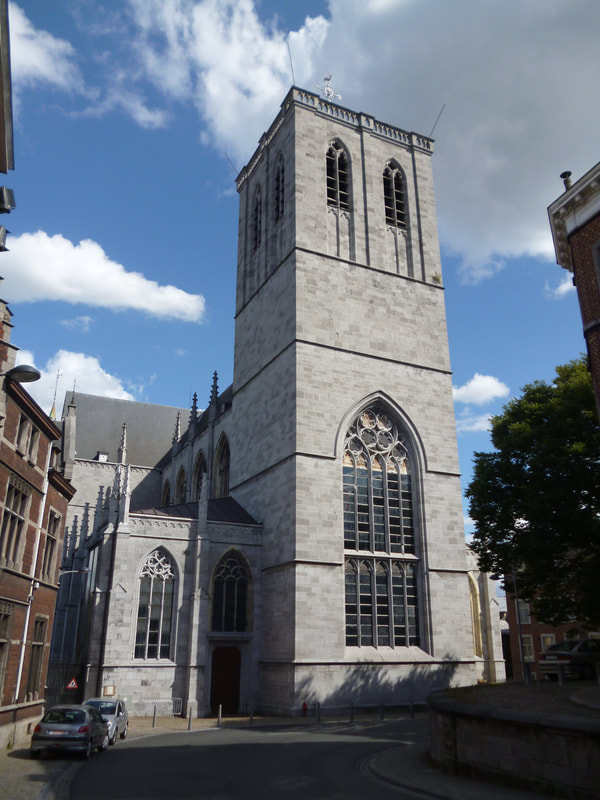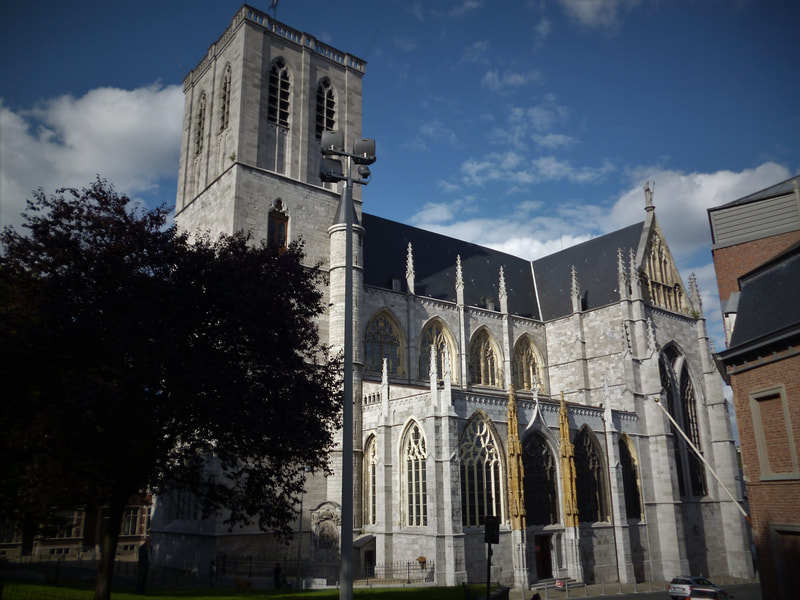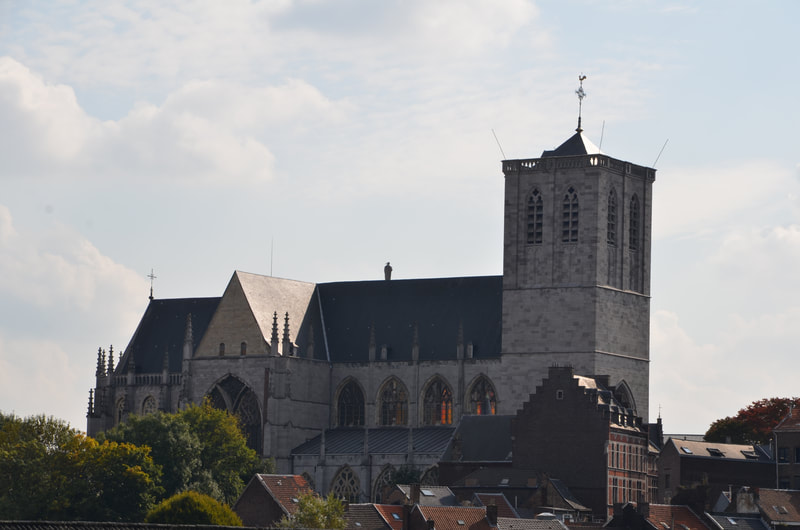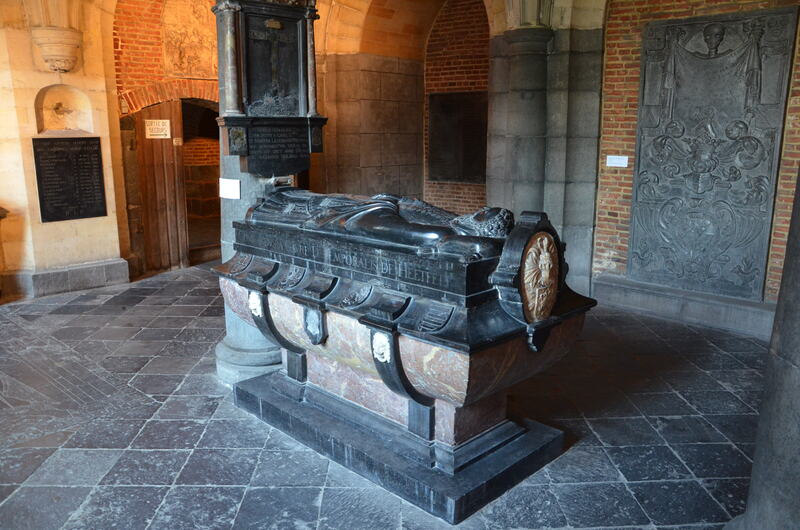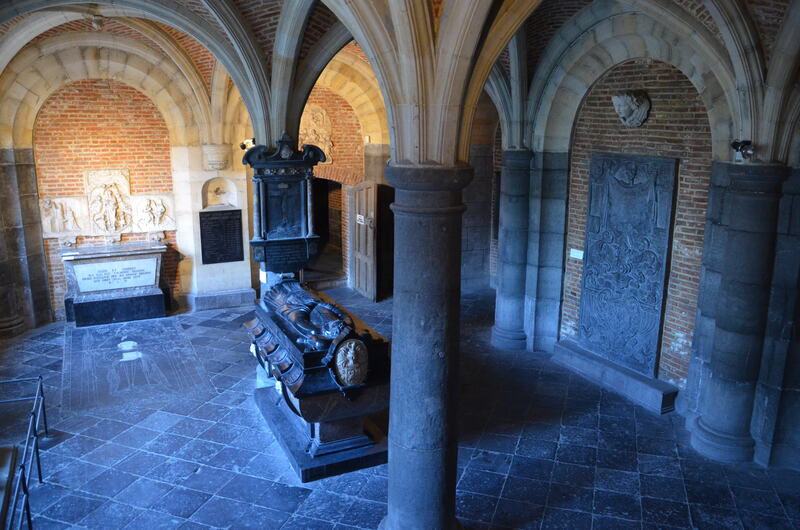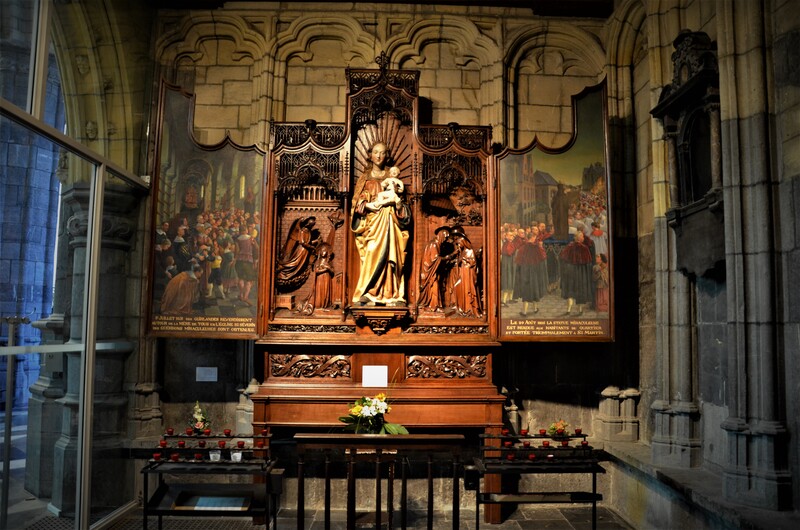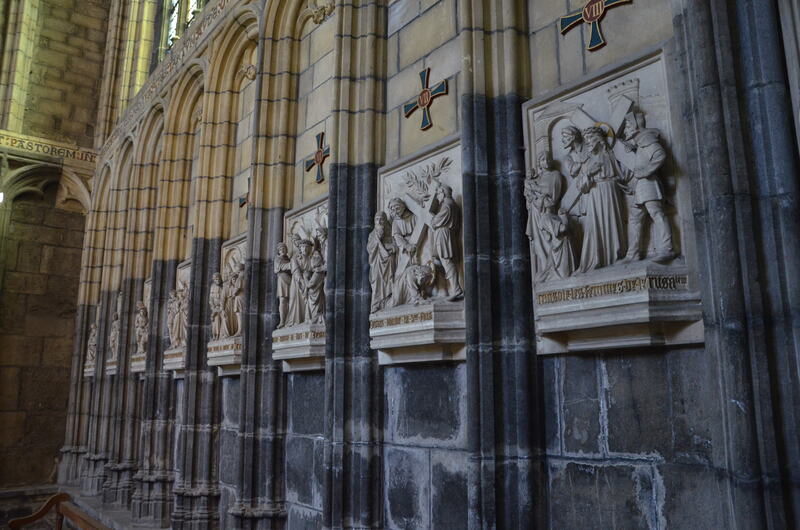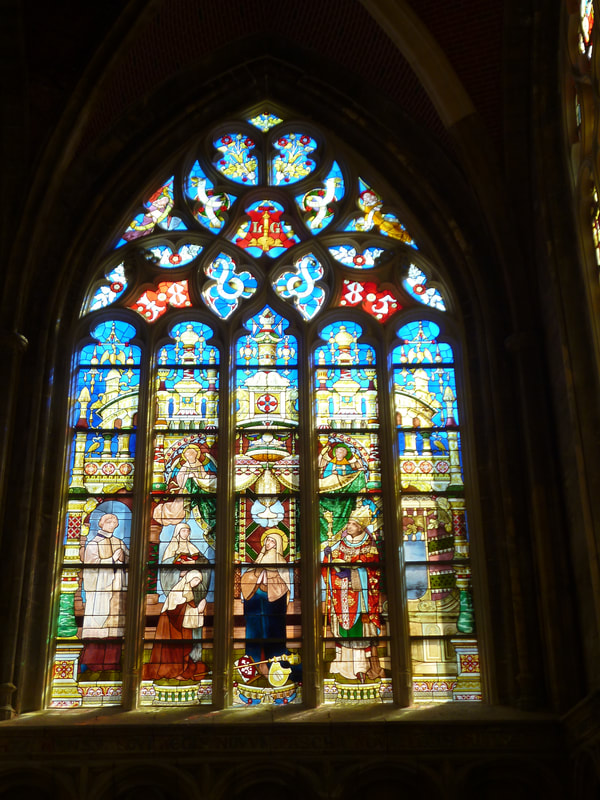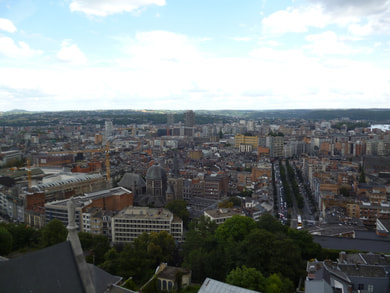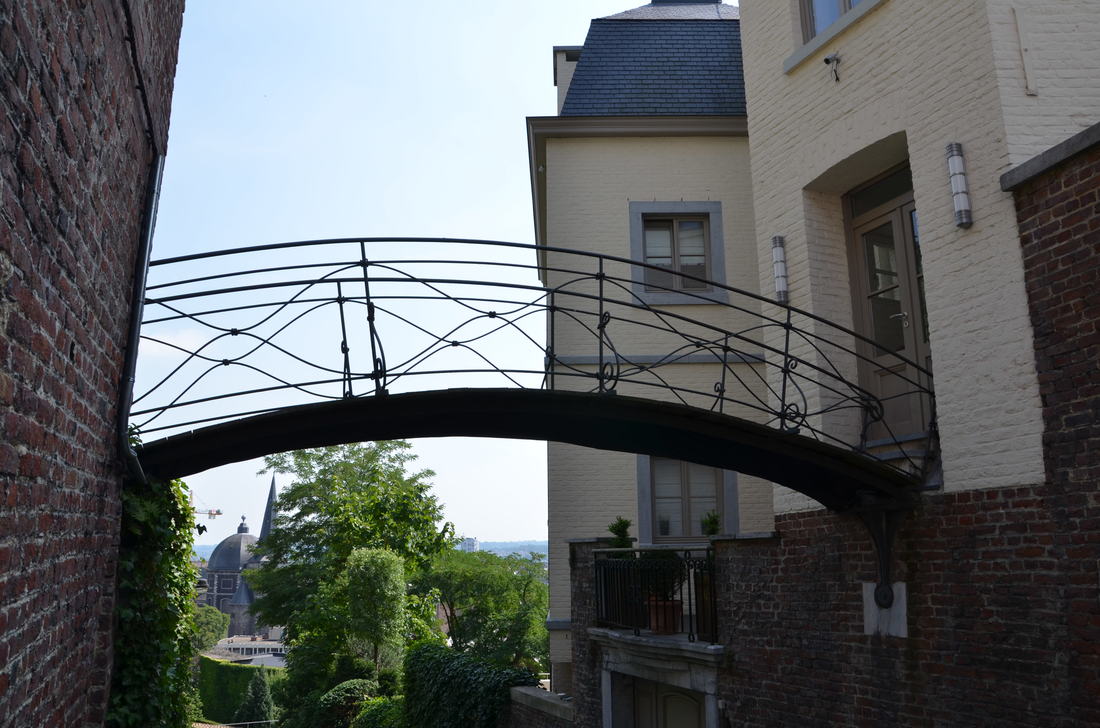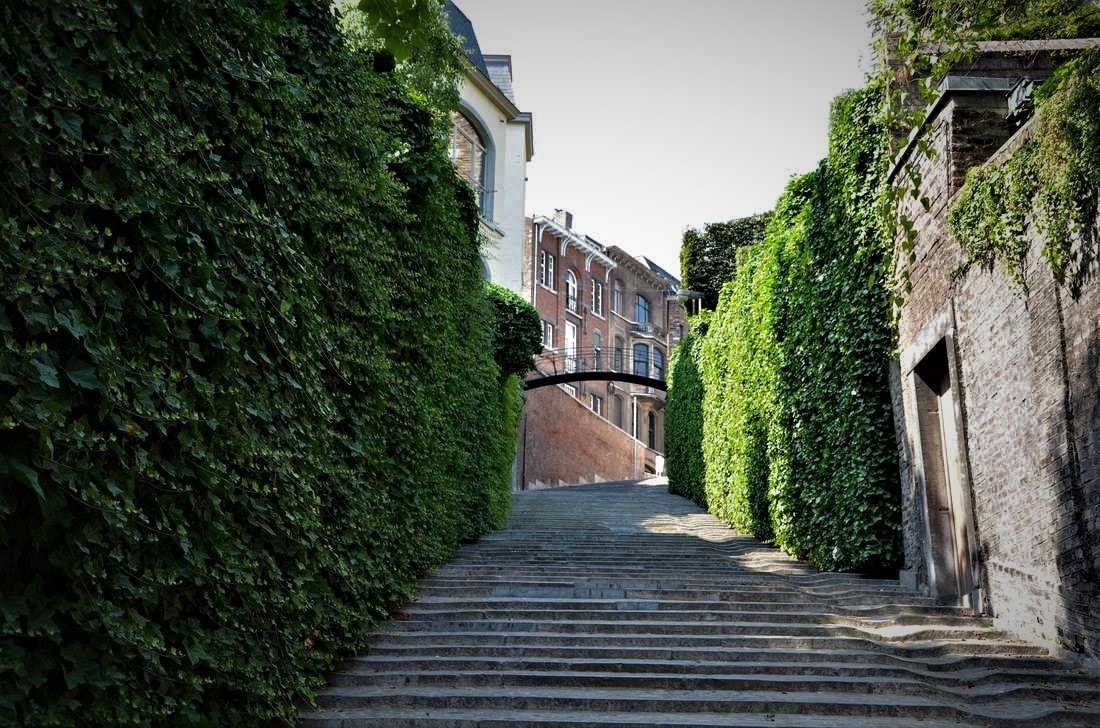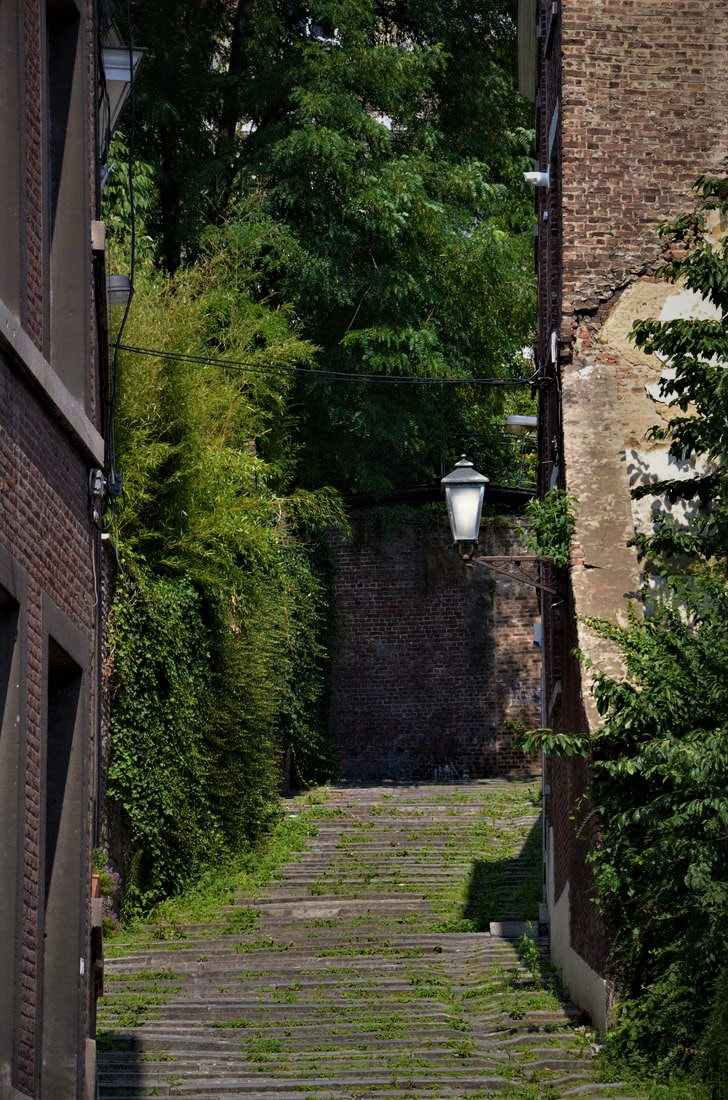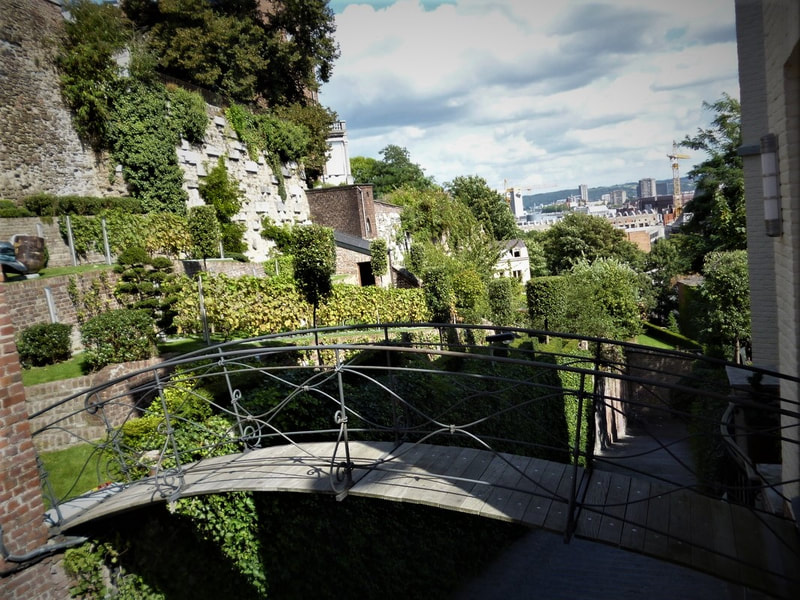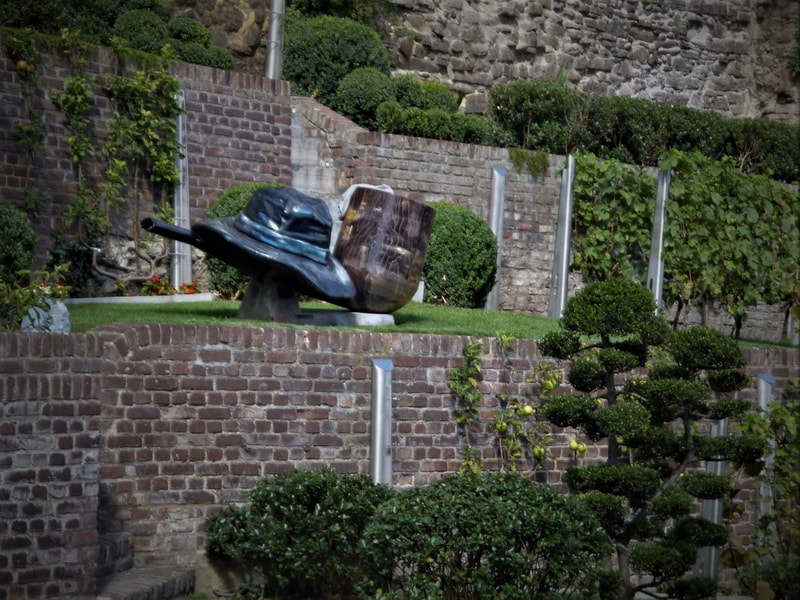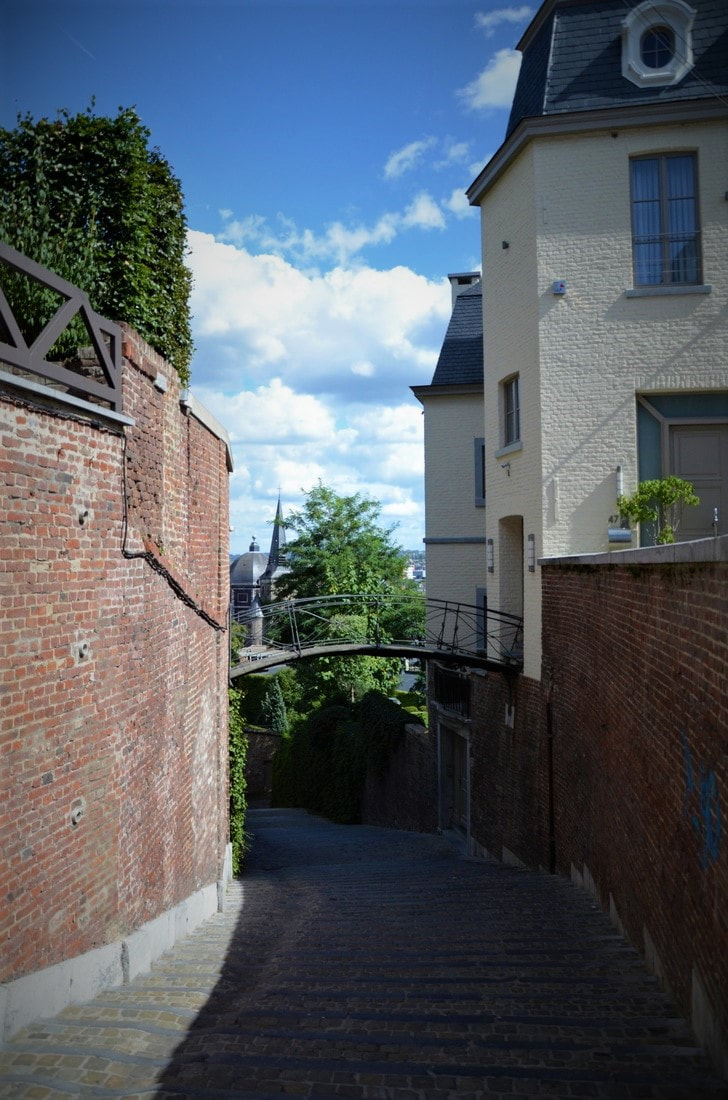Church of St. Martin |
vertical divider
Construction of the temple began, at the behest of Bishop Eracle, in 962 or 963, and completed in 971. In 1312 the church was destroyed and then rebuilt. In 1542 the temple was rebuilt in the style we can admire today. The church of Saint Martin, next to the cathedral of St. Paul and collegiate church of St. James, one of the greatest churches in Liege. In 1247, the feast of Corpus Christi was celebrated here for the first time.
|
Kościół ma ponad 76 metrów długości, oraz 21 metrów szerokości. Jest to kościół trzynawowy. Jego nawy wspierane są przez ośmioboczne kolumny, otoczone pod kątem przez kolumny pół cylindryczne.
Klerestorium (architektoniczny termin oznaczający ścianę z oknami wystającą ponad dach nawy bocznej, głównie w romańskich i gotyckich kościołach. Klerestorium zapewniało światło we wnętrzu budowli) posiada trójlistny podział okna, z zaokrąglonym wierzchołkiem. Krańce transeptu zwieńczone są przez wspaniałe okna, w okazałym stylu.
Klerestorium (architektoniczny termin oznaczający ścianę z oknami wystającą ponad dach nawy bocznej, głównie w romańskich i gotyckich kościołach. Klerestorium zapewniało światło we wnętrzu budowli) posiada trójlistny podział okna, z zaokrąglonym wierzchołkiem. Krańce transeptu zwieńczone są przez wspaniałe okna, w okazałym stylu.
Church of Sts. Martin has only one entrance. In the place where the main entrance was to be formed square tower, with a pyramidal roof, surrounded by a balustrade. Once a year, in August, you can go out on the roof of the tower and enjoy the beautiful panorama of Liege.
Inside, there is a calvary from the beginning of the 16th century, the mausoleum of Bishop Eracle, a 16th-century polychrome wooden statue of the Virgin Mary, the chapel of St. Sacrament, decorated with a medallion created by the artist Del Cour (1704), excellent stained glass (1526-1527) depicting the feast of Corpus Christi. In the crypt, a tomb of black marble from Theux, superior of St. Martin, Konrad de Grave (1602).
On the night of 3 on 4 August 1312, the patricians (privileged, upper social class) attacked priests and guild members gathered in the church of St. Marcin during the election of a new bishop. The conflict escalated. Eventually, guild members called for meals. Patricians, together with city officials hid inside the church under which a fire was set. About 200 patricians and 10 of 14 officials were killed in the fire and from the wounds inflicted by the attackers. This dramatic episode in the history of the church was called Mal Saint-Martin.
Feast of Corpus Christi
Bezpośrednią przyczyną ustanowienia święta były objawienia błogosławionej Julianny z Cornillon, która miała widzenia jaśniejącej tarczy z ciemną plamą, co interpretowano jako znak braku w kalendarzu liturgicznym specjalnego dnia poświęconego Najświętszemu Sakramentowi. Pod wpływem tych objawień, biskup Liege Robert z Thourotte ustanowił w 1246 roku takie święto, w Liege. W 1294 roku Papież Urban IV wprowadził je jako festum Corporis Christi w całym kościele.
|
Address:
Rue du Mont St Martin 64, 4000 Liege |
Opening hours:
poniedziałek-sobota: 14.00-18.00 niedziela: 14.00-12.30 i 14.00-18.00 |
Ticket price:
Free entrance |
Idąc w górę ulicy, około sto metrów od kościoła, natrafimy na jeden z najbardziej urokliwych zakątków w Liege. Jest to miejsce, które często gości na pocztówkach i folderach turystycznych.
